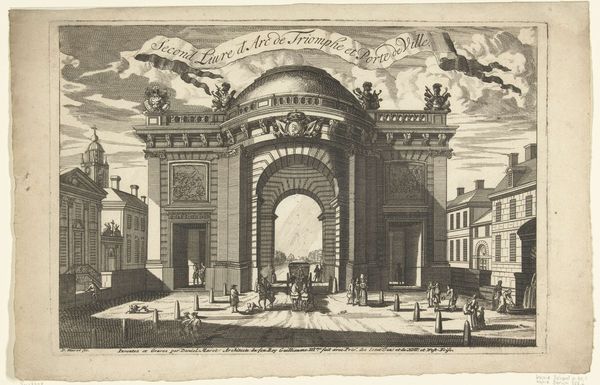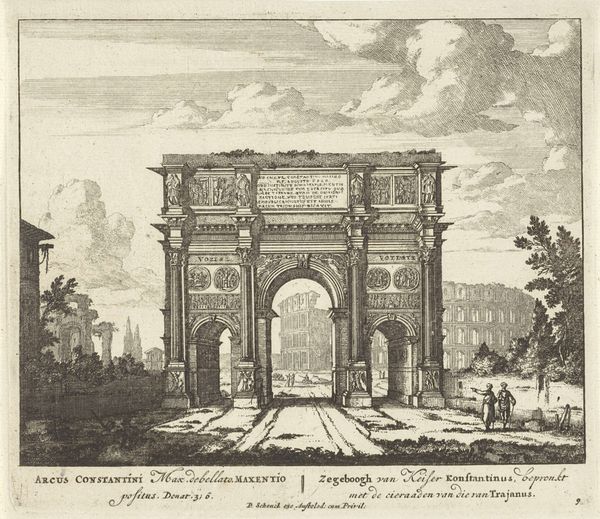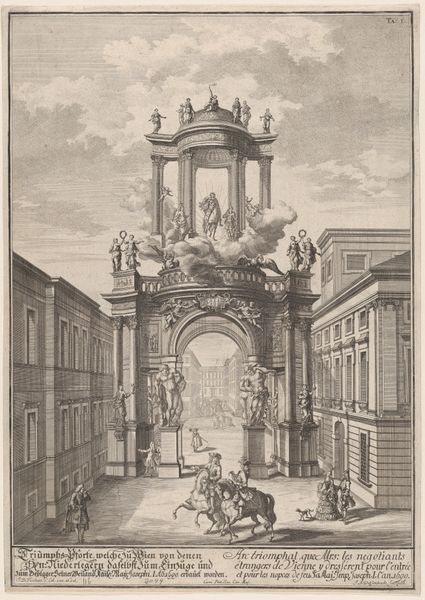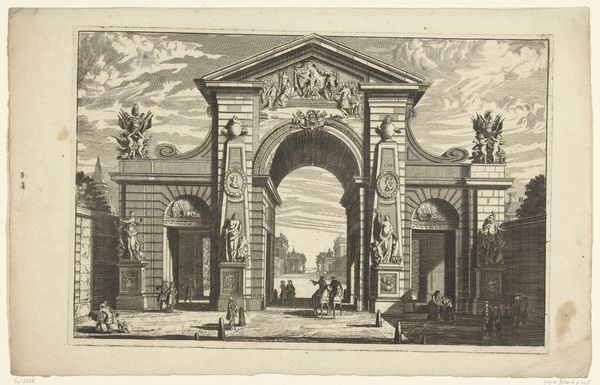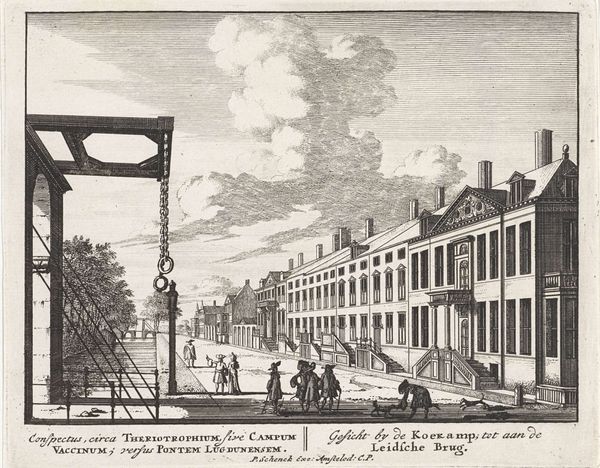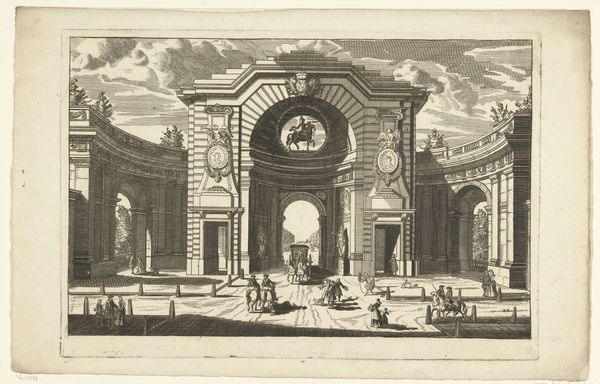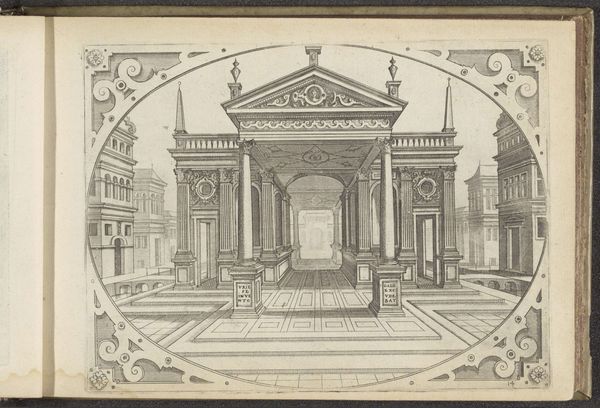
print, engraving
#
dutch-golden-age
# print
#
old engraving style
#
landscape
#
perspective
#
cityscape
#
engraving
Dimensions: height 132 mm, width 167 mm
Copyright: Rijks Museum: Open Domain
Editor: Here we have "Gezicht op de Bosbrug en het Korte Voorhout te Den Haag," a print from somewhere between 1686 and 1711, currently residing in the Rijksmuseum. The engraving shows a cityscape, and I’m immediately struck by the almost diagrammatic rendering of the bridge and buildings. It’s fascinating. What catches your eye? Curator: It’s tempting to be drawn to the subject of the print—the architecture, the composition, the historical depiction—but I find myself most interested in *how* it was made. Let's consider the labor involved. Look at the detail achieved through engraving, the specific tools and techniques required, and the economic conditions that supported printmaking at this scale. Are we looking at the democratization of images, or the development of printmaking as a form of luxury consumption? Editor: That's an interesting angle. So instead of just admiring the view, we're thinking about the person who made it and *why*? Curator: Precisely. Think about the production process. Who commissioned the work, and what was their social standing? What kind of patronage networks are at play? The materiality of the engraving itself—the metal plate, the paper, the ink—speak to resource extraction, trade routes, and even the accessibility of art to different social classes. Can we understand the broader economic structures through this artwork? Editor: So, it’s less about the scene depicted and more about the system that allowed it to be created? Curator: Exactly. The bridge itself could be seen as a facilitator of trade. Then the printmaking that came after is documenting it as an achievement but simultaneously functioning *within* its capitalist network. Every line, every mark, is connected to the materiality of its production. Editor: I hadn't considered that! I guess I was so focused on what was *in* the image rather than what went into *making* the image. Thank you. Curator: An artwork contains just as much if not more substance about what makes it "work" than what's inside.
Comments
No comments
Be the first to comment and join the conversation on the ultimate creative platform.

